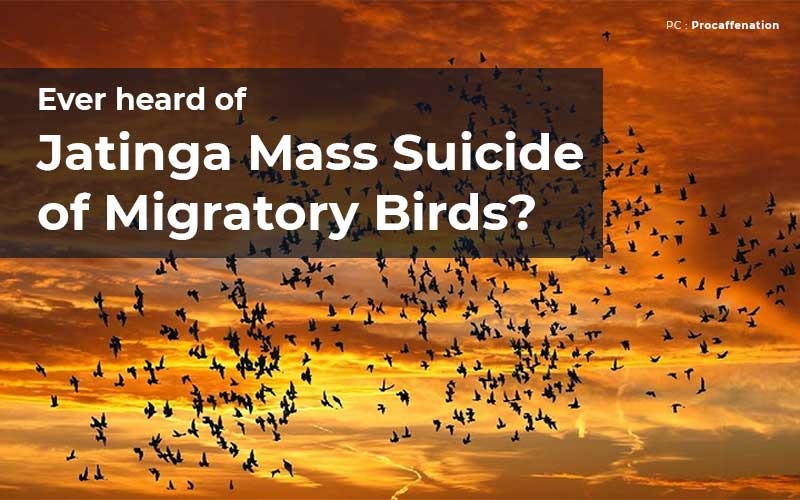
Ever Heard Of Jatinga’s Mass Suicide Of Birds?
Have you ever wondered what distinguishes Jatinga in Dima Hasao from other tourism destinations in northeast India?
Well, Jatinga is a small village in the Dima Hasao District of Assam. The place is all about discovering and experiencing the core of Enchanting India, with amazing and luscious vistas of nature.
The mystery of mass bird suicide distinguishes Jatinga from any other ordinary Indian vacation destination. Yes, per this account, birds from all around come here to face death rather than to breed, migrate, or do anything else. Isn't that just surreal?
Interestingly, the incident has been going on since 1910, but it only came to light in the year 1957, when ornithologist E.P. Gee, a British tea planter mentioned the same in his book ‘Wild Life of India in the same year.
It might sound absurd or unreal, yet it is a natural occurrence that no one has yet been able to describe or understand to this day. However, as the news of this phenomenon spread, it quickly drew the attention of scientists, researchers, and other prominent people with an interest in this unnatural occurrence. And, based on their rational method and analysis, it was partially established that these phenomena of bulk bird deaths in Jatinga occur precisely between the months of September and November and at a precise moment, i.e., typically between 7 p.m. and 10 p.m.
What do the locals think about the mass bird suicide?
The locals think this is due to some mythical powers or some extraterrestrial force blended with the winds. Locals believe the birds appear dizzy and confused before smashing into trees, lights, and buildings. However, logical reasoning will be that in damp and foggy weather, winds blow rapidly, so birds fly near light-sourcing objects. Due to the lack of visibility, they do not see clearly, and they collide with a building or trees, or vehicles.
But why?
As with advancements in science and more research, many ornithologists believe that birds such as Kingfishers, Pond Heron, and Tiger Bitterns exhibit such bizarre behaviour. This unique phenomenon occurs during the late monsoon season as numerous water bodies are inundated at that time, causing the birds to lose their livelihood and have to move to another location. Added to this the weather and visibility during this migration may be the reason behind this whole activity.
If we go back in time, the greatest number of suicides was recorded in 1988, when the state was hit by a major catastrophic flood. However, some long-distance migratory birds, on the other hand, were completely unaffected.
It remains uncertain whether the entire phenomenon is accidental in nature or a man-made myth, but what remains important is to understand this occurrence and find a way to protect thousands of birds from meeting this kind of an end.
Disclaimer: The opinions expressed in this article are those of the author's. They do not purport to reflect the opinions or views of The Critical Script or its editor.

Newsletter!!!
Subscribe to our weekly Newsletter and stay tuned.

















Related Comments